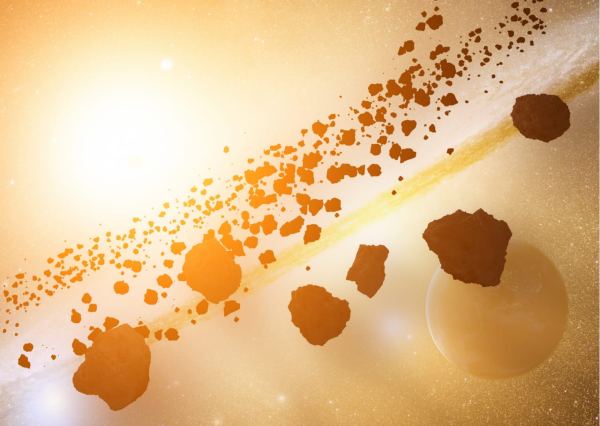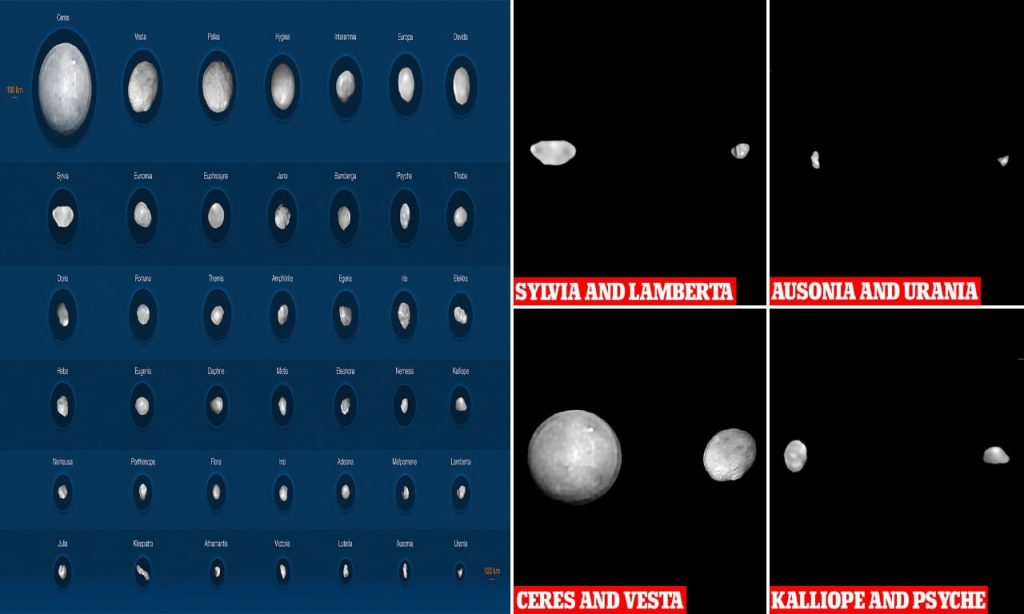Recently, using the ESO’s VLT (European Southern Observatory’s Very Large Telescope), astronomers have found the group of 42 biggest asteroids orbiting around the sun in the Mars-Jupiter Orbit.
The asteroids discovered are the biggest asteroids to be ever discovered and astronomers are trying their ways in the best manner to trace out their origin.
Asteroid Variations
The asteroids discovered have varying shapes and sizes. While many of the asteroids are spherical in shape, some of the asteroids are unevenly shaped. The diameters of most of the asteroids out of all discovered range somewhat between 270 km t0 1000 km approx. The team of astronomers tried their best and hard to analyze and probe into every detail of the 42 asteroids they discovered.
According to the head astronomer of the study, “Out of all the asteroids discovered, only three asteroids in the main-belt (“Ceres”, “Vesta” and “Lutetia”) were imaged with high precision and a high degree of accuracy. This however does not mean that the images of other asteroids obtained were very poor and could not be observed.
The images of other asteroids (apart from “Ceres”, “Vesta” and “Lutetia”) were also crystal clear and highly observable.The team while analyzing the images of asteroids found that 20 of them have a diameter greater than 200 km.
While the two asteroids (namely “Ceres” and “Vesta”) were the largest among all having diameters of 940 km and 520 km respectively. The team also probed and found the two smallest stones “Urania” and “Ausonia” which were only about 90 km in diameter.
The team of astronomers classified the asteroids into two families. As already told, many of the asteroids (e.g Flora, Adeona, Ceres, and Hygiea) are spherical in shape, while some of the asteroids had uneven and elongated shapes (e.g. Kleopatra).
Kleopatra (The Dog-bone Shaped Asteroid)
The astronomers while probing the asteroids found an elongated dog-bone-shaped asteroid which they named “Kleopatra”. The asteroid also got huge appreciation, became famous for its dog-bone structure, and got the name after the Egyptian Queen “Kleopatra”.
This bone-shaped asteroid however was discovered 20 years ago using radar observations, however, the ESO’s VLT (European Southern Observatory’s Very Large Telescope) had made it possible to reconstruct its high definition 3D image with great accuracy and carry out all the research in an easy manner.
The researches carried out has unleashed many new things and also helped the scientists know the reason for the formation of the asteroids and the two moons orbiting around them.
Densities Of The Asteroids
The shapes of the asteroids and the mass of each asteroid found out by the astronomers also helped them to calculate the densities of the asteroids. Some asteroids studies (e.g. Lamberta and Sylvia) had very small densities (around 1.3 g/cm3) nearly equal to the density of coal.
While two of the asteroids (Psyche and Kalliope) had the highest densities of 3.3 g/cm3 and 4.3 g/cm3. The density of the asteroid is somewhat helpful in determining the origin of the asteroid. Various questions related to the origin of the asteroid, its migration into the asteroid-belt from the far space, and many more questions could be easily answered.
Conclusion
With the discovery of the 42 asteroids in space, the scientists are looking to get into each and every minute detail associated with the asteroids and discover more asteroids in the belt further. The “Extremely Large Telescope (ELT)” under construction in Chile will help them to analyze the objects having diameters between 35-80 km range.
Thus, much is awaited in the coming decade, and with many discoveries and investigations coming up next, who knows! We are going to witness a huge positive change in space science.
Must read for more information


